1. Introduction
 OCZ is a company that is gaining more and more of the limelight every day. This has been achieved through carefully planned marketing strategies coupled with quality products that exceed every demanding user's highest expectations.
Some unique and innovative products that have the OCZ signature include the DDR Power Booster, high quality memory modules and their new line of high quality power supplies.
OCZ is a company that is gaining more and more of the limelight every day. This has been achieved through carefully planned marketing strategies coupled with quality products that exceed every demanding user's highest expectations.
Some unique and innovative products that have the OCZ signature include the DDR Power Booster, high quality memory modules and their new line of high quality power supplies.
It’s really refreshing to see companies like OCZ, companies built by technology lovers and dedicated to technology lovers.
Today we'll be testing the PC3200 Gold Edition RAM modules sent to us by OCZ, a pair of modules that have some really exciting characteristics.

-PACKAGING AND SPEC’s
The modules were delivered to us in a basic but decent plastic clamshell-type package.


Specifications
- 400MHz DDR
- CL 2-2-2-5 (CAS-TRCD-TRP-TRAS)
- 1GB (2x512) Dual Channel Optimized Kit
- Unbuffered
- Gold Layered Copper Heatspreader
- Lifetime Warranty
- 2.8 Volts
- 184 Pin DIMM
Special Features
-
EVP® (Extended Voltage Protection)
- ULN (Ultra Low Noise)
2. A Closer Look
The OCZ EL DDR400 Gold Edition memory modules carry the specifications label on which is written the RAM part number, timing, speed and of course the RAM size. The specifications for the modules contain the magical 2-2-2-5!
These timings at high FSB speeds promise really good performance, something we'll have to wait and see our own eyes.

The embossed logo is yet more proof of the attention OCZ gives to all their products, down to the last detail.
After all, in today’s competitive market, detail is what makes the difference.
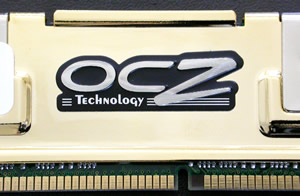
The massive heat spreaders are made of copper with a stunning gold finish.
From the side of the modules, we can see the actual size of these copper plates, which by the way do an incredible job of keeping the temperatures down to low levels.

And for those who love detail, the modules are constructed on a PCB board from Brainpower, which has a reputation for its overclocking abilities.
Of course, we didn’t expect anything less after we read the specifications and the details from OCZ.

3. Tests - Page 1
We tested the modules in two separate systems in order to have a more complete picture of their performance.
Of course, we used one Intel based platform and one AMD, since we know how differently memory modules can behave in different systems.
The exact composition of the systems is:

-INTEL RESULTS
RightMark Memory Analyzer
RightMark Memory is a very useful diagnostics and benchmarking tool with which we can see details for the memory modules, as well as measure their performance. In the second screen, we see that the memory timings are set to 2,5-3-3-7.
This is the default setting by SPD and it's set like this in order to provide maximum compatibility with most of the motherboards we can find on the market.
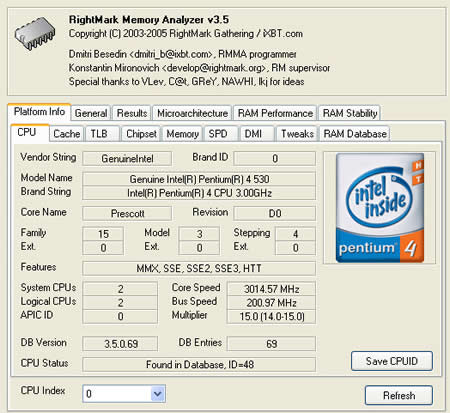
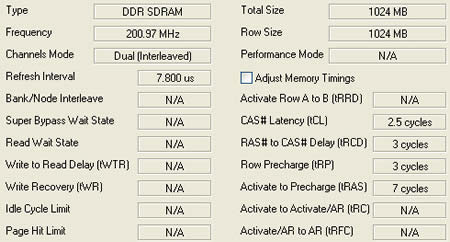
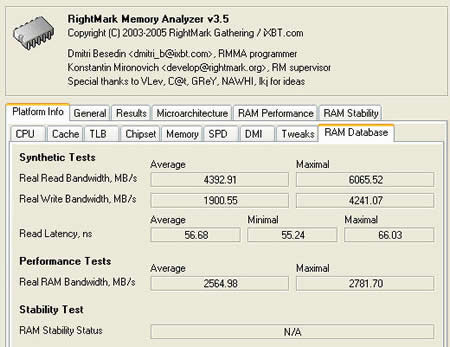
These are according to the RightMark Memory Analyser, the Real RAM memory bandwidth and the latency timing.


-EVEREST

EVEREST Ultimate Edition is an industry leading system diagnostics and benchmarking solution for enthusiast PC users, based on the award-winning EVEREST Technology. During system optimizations and tweaking, it provides essential system and overclock information, advanced hardware monitoring and diagnostics capabilities to check the effects of the applied settings. CPU, FPU and memory benchmarks are available to measure the actual system performance and compare it to previous states or other systems. Furthermore, complete software, operating system and security information makes EVEREST Ultimate Edition a comprehensive systems diagnostics tool that offers a total of 100 pages of information about your PC.
In the first three screenshots below, we see the results Everest gave us for the reading, writing and latency timings in ns.
The read and write numbers are very good, something we cannot say for the latency times which is very high.
It is known that these modules prefer the AMD platforms so we will compare them a little bit later.
READ

WRITE

LATENCY

-SISOFT SANDRA

SiSoftware Sandra is a 32-bit and 64bit Windows system analyser that includes benchmarking, testing and listing modules. It tries to go beyond other utilities to show you more of what is really going on under the hood so you can draw comparisons at both a high and low-level in a single product.
You can see information about the CPU, chipsets,video adapter, ports,printers, sound card , memory, network, Windows internals, AGP, ODBC Connections, USB2, Firewire etc. You can save/print/fax/e-mail/post/upload or insert into ADO/ODBC databases reports in text, HTML, XML, SMS/DMI or RPT format.
This version supports multiple sources of information gathering including remote computers, PDAs, Smart Phones, ADO/ODBC databases or saved system reports.
All benchmarks are optimised for both SMP & SMT (Hyper threading), up to 32/64 CPUs depending on the platform.
The bandwidth at 4371 MB/S is a good result. To be exact, better than in many other tests we have carried out till now.

4. Tests - Page 2
Initially, we used CPU Z to get all the information about the motherboard, the CPU and the memory timings.
As we can see, the memory timings are manually set at 2-2-2-5 from Abit's BIOS and under SPD we see the default settings at 2.5-3-3-7.
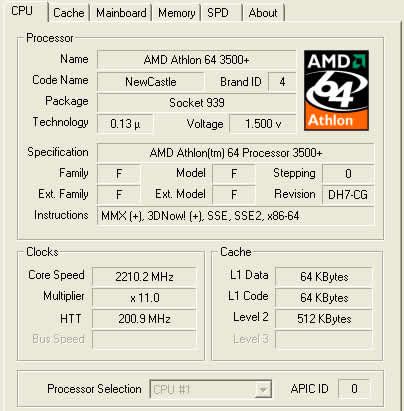

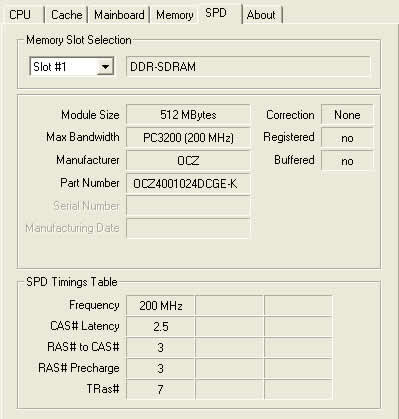
-EVEREST
READ

WRITE

LATENCY

-SISOFT SANDRA
The result from Sandra was satisfactory, but not exactly what we expected, so we must wait and see what will happen when we really start pushing these modules to the limits.

-PCMARK 04

There are 12 system tests - each one designed to represent a certain type of PC usage. By running these tests, PCMark04 stresses the components in a manner, similar to that of stress under real life use. Three test pairs are run concurrently in separate threads. The overall PCMark04 score is calculated based on the tests in the system test suite.
Tests in the system test suite are:
- File compression
- File uncompression
- File encryption
- File decryption
- Virus scanning
- Grammar check
- Audio conversion
- Image processing
- Web page rendering
- WMV video compression
- DivX video compression
- Physics calculation and 3D
PCMark04 scores will initially range between a 1100 and 5000 PCMarks.They are scaled such that an entry level system will score approximately 1100 and a high end system will score approximately 5000.
Again we had good results from the OCZ modules, even without us tampering with the voltages or frequency.
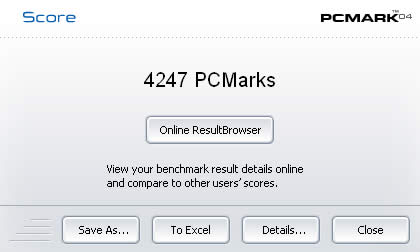
5. Overclocking
The motherboard we used for the AMD system was Abit’s AN8 Fatal1ty, an excellent motherboard for overclocking with everything an overclocker might need.
Everything except for one thing! The ability to raise the VDIMM above 2.80V, something that clearly puts a limit on memory overclocking.
Nevertheless, we raised the voltage to the maximum settings available and then we started measuring the system by raising the memory frequency to 266MHz, 333MHz and 400MHz.
Unfortunately, we didn't test the overclocking capabilities of the modules in our Intel based system due to the limited overclocking capabilities of the Gigabyte GA 81915P Duo Pro.
But no harm done since these modules are famous for their good relation with the AMD platforms.
Lets see the results from this overclocking.
In these screenshots, we see the instances for each of the three module frequency we tested at.
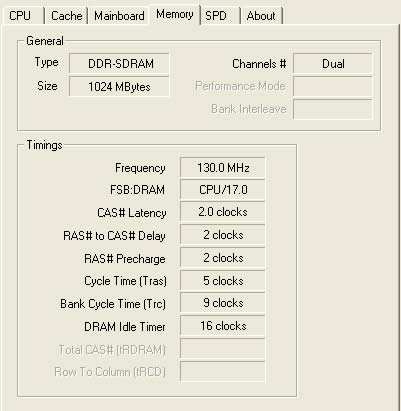
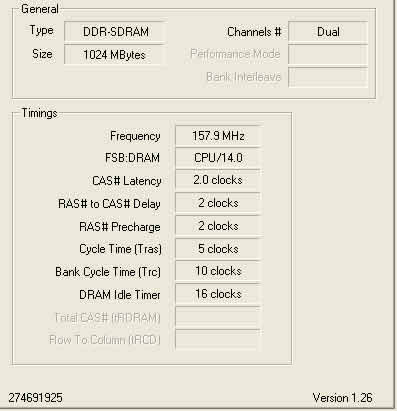
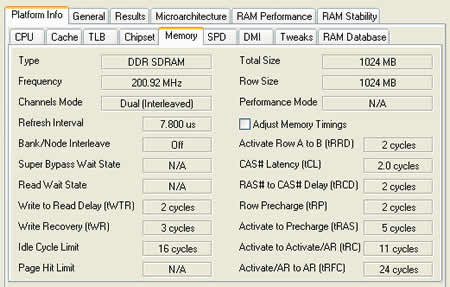

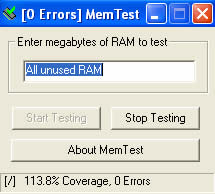
It's also worth mentioning that in each case where we increased the frequency, we tested the stability of the system using the MEMTEST program.
In all cases the system was stable and MemTest found no errors originating from the memory modules.
-RIGHT MARK MEMORY
Notice that the more we push the frequency up, the better the performance we get.

-EVEREST
Also improved is the performance for the read and write tests in Everest.
EVEREST READ - WRITE TESTS

The latency timings are also significantly reduced (don't forget in latency, less is better).
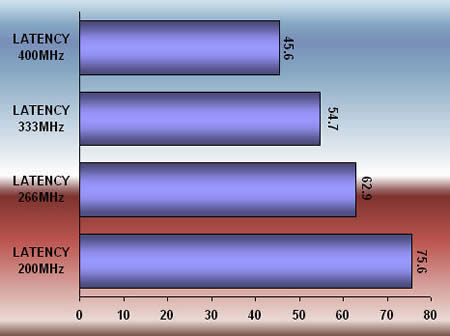
- PC MARK04
The PCMARK benchmark program behaved exactly as with all the other tests, where the higher the frequency, the better the results.
The final score was excellent, showing the potential that these modules really have.
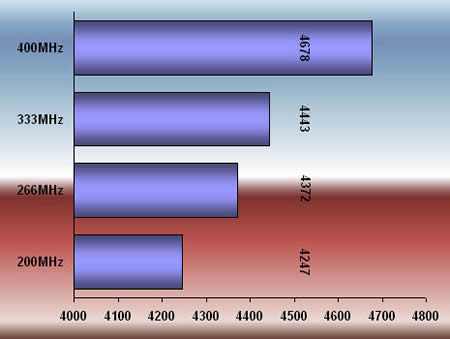
-SANDRA
Sisoft Sandra showed the biggest increase in memory bandwidth from all the programs we used.
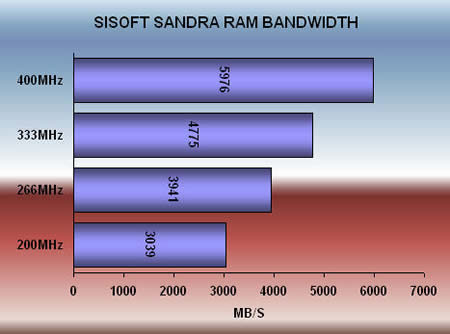
6. Conclusion
Is it possible for a memory module to be beautiful?
Well, in the case of the OCZ DDR PC-3200 Gold Edition it is!
These modules have the looks, with the Gold finish copper heat spreaders, which by the way do an incredible job. At no point during our testing did we noticed a huge increase in temperature, but this is not the only reason to buy them.
They perform very admirably under normal voltages and frequencies, but once you give them a boost by increasing the voltage and frequency, they really take off!
And the best is that increasing the voltage doesn’t affect the guarantee, which by the way is a lifetime guarantee!
Once your motherboard can handle their appetite for power, this is the memory you want, so don’t hesitate.

At the time of this review, pricing for the memory modules was around €152 for the package (i.e. 2 modules).
The Good:
- Great 2-2-2-5 timings
- Exceptional Overclocking capabilities
- Reliability and Stability
- Very good performance at all speeds
- Top quality and great looks
The Bad:
- We're still trying to find something

